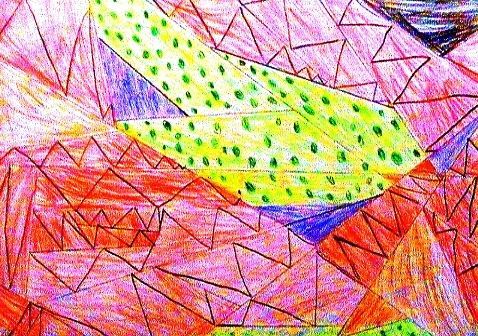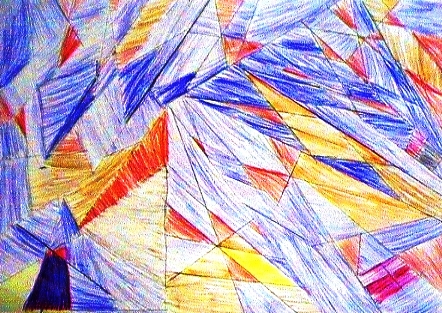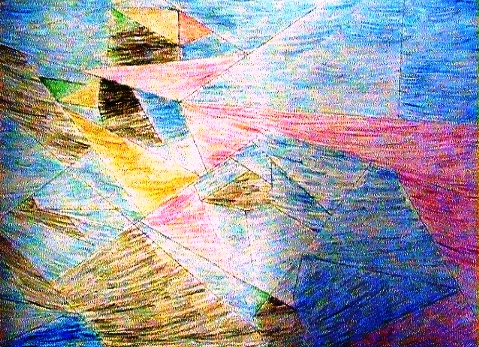Skip over navigation



Or search by topic
Number and algebra
Geometry and measure
Probability and statistics
Working mathematically
Advanced mathematics
For younger learners
Shapely Lines
Age 5 to 7
Challenge Level 





- Problem
- Getting Started
- Student Solutions
- Teachers' Resources
Here are some photos sent to us by children at Aycliffe Drive Primary School:
Jonathan's picture:

Jonathan's Key:
- Quadrillaterals are blue; I know this because they have 4 sides.
- Right angle triangles are light brown; they have one right angle, 3 sides and 3 angles.
- Scalene triangles are pink; I know this because I went on the computer and found out a scalene triangle has 3 unequal sides and 3 angles.
- Irregular pentagons are black; they have 5 unequal sides and angles.
- Obtuse triangles are green; these are triangles with one obtuse angle.
Other pictures sent into us by Callum and
Chloe at Aycliffe Drive Primary School:


Great use of colours and patterns to
differentiate between triangles, quadrilaterals and
pentagons.
You may also like
Let's Investigate Triangles
Vincent and Tara are making triangles with the class construction set. They have a pile of strips of different lengths. How many different triangles can they make?

